




Related bibliographies:
Reptiles
 Lizards Lizards
 Helodermatidae Helodermatidae
Central America
North America






































































































































































































































































































































| |

Bibliography of the genus
Heloderma (Beaded Lizards)

(Reptilia: Sauria: Helodermatidae)
Note:
In order to limit redundancy, relevant literature indexed in the related bibliographies in the left column may not have been included in this page. For a comprehensive search of literature, these bibliographies should therefore also be consulted.
Heloderma in general
 |
Applegate, R.W. 1999. Heloderma suspectum, horridum. The horrible, suspicious, venomous lizards of the New World. Reptilia (GB) 7: 28-33.
Arlington, O.N. 1930. Notes on the two poisonous lizards with special reference to Heloderma suspectum. Bulletin of the Antivenin Institute of America 4: 29-35.
Ast, J.C. 2001. Mitochondrial DNA evidence and evolution in Varanoidea (squamata). Cladistics 17(3): 211-226.
Beaman, K.R.; Beck, D.D.; McGurty, B.M. 2006. The Beaded Lizard (Heloderma horridum) and Gila Monster (Heloderma suspectum): a bibliography of the family Helodermatidae. Smithsonian Herpetological Information Service 136: 1-66.
Beck, D.D. 2005. Biology of Gila Monsters and Beaded Lizards. University of California Press, Berkeley, Los Angeles & London. 211 pp.
Beck, D.D.; Dohm, M.R.; Garland, T.; Ramirez-Bautista, A.; Lowe, C.H. 1995. Locomotor performance and activity energetics of helodermatid lizards. Copeia 1995(3): 577-585.
Beck, D.D.; Lowe, C.H. 1994. Resting metabolism of helodermatid lizards: allometric and ecological relationships. Journal of Comparative Physiology B Biochemical Systemic and Environmental Physiology 164(2): 124-129.
Beck, D.D.; Martin, B.E.; Lowe, C.H. 2005. Population ecology. pp. 107-117. In: Beck, D.D. Biology of gila monsters and beaded lizards. University of California Press, Berkeley, Los Angeles & London. 211 pp.
Bhullar, B.A.S.; Smith, K.T. 2008. Helodermatid lizard from the Miocene of Florida, the evolution of the dentary in Helodermatidae, and comments on dentary morphology in Varanoidea. Journal of Herpetology 42(2): 286-302.
Bissinger, B.E.; Simon, C.A. 1979. Comparison of tongue extrusions in representatives of six families of lizards. Journal of Herpetology 13(2): 133-139.
Bogert, C.M. 1956. The world's only venomous lizards. Animal Kingdom 59: 105-109.
Bogert, C.M.; Martin del Campo, R. 1952. Geoclines and ontoclines in lizards of the genus Heloderma. Annu. Meet. Amer. Soc. Ichthyol. Herpetol. 32nd., Austin, Texas.
Bogert, C.M.; Martin del Campo, R. 1956. The Gila Monster and its allies. The relationships, habits, and behavior of the lizards of the Family Helodermatidae. Bulletin of the American Museum of Natural History 109: 1-238.
Böhme, W.; Ziegler, T. 2009. A review of iguanian and anguimorph lizard genitalia (Squamata: Chamaeleonidae; Varanoidea, Shinisauridae, Xenosauridae, Anguidae) and their phylogenetic significance: comparisons with molecular data sets. Journal of Zoological Systematics and Evolutionary Research 47(2): 189-202.
Boulenger, G.A. 1885. Catalogue of the lizards in the British Museum (Natural History). Vol. 2. Iguanidae, Xenosauridae, Zonuridae, Anguidae, Anniellidae, Helodermatidae, Varanidae, Xantusiidae, Teiidae, Amphisbaenidae. British Museum (Natural History), London. 497 pp.
Boulenger, G.A. 1891. Notes on the osteology of Heloderma horridum and H. suspectum, with remarks on the systematic position of the Helodermatidae and on the vertebrae of the Lacertilia. Proceedings of the Zoological Society of London 1891(1): 109-118.
Boyer, D.M. 1995. Venomous reptiles: an overview of families, handling, restraint techniques, and emergency protocol. Proceedings of the Association of Reptilian & Amphibian Veterinarians 1995: 83-90.
Branch, W.R. 1982. Hemipeneal morphology of platynotan lizards. Journal of Herpetology 16(1): 16-38.
Brennan, G.A. 1924. A case of death from Heloderma bite. Copeia 1924(129): 45.
Brouwer, K. 1992. The 1991 EEP annual reports. IZN (International Zoo News) 39(6): 8-17.
Brown, D.E.; Carmony, N.B. 1991. Gila monster. Facts and folklore of America's Aztec lizard. High-Lonesome Books, Silver City. 127 pp.
Campbell, J.A.; Lamar, W.W. 1989. The venomous reptiles of Latin America. Cornell University Press, Ithaca, New York. 425 pp.
Campbell, J.A.; Lamar, W.W. 2004. The venomous reptiles of the Western Hemisphere. Vol. 1-2. Comstock Publishing Associates, Ithaca, N.Y. 870 pp.
Caras, R.A. 1978. Dangerous to man: the definitive story of wildlife's reputed dangers. Barrie & Jenkins, London. 327 pp.
Conrad, J.L.; Ast, J.C.; Montanari, S.; Norell, M.A. 2011. A combined evidence phylogenetic analysis of Anguimorpha (Reptilia: Squamata). Cladistics 27(3): 230-277.
Cooper, W.E.; Arnett, J. 2001. Absence of discriminatory tongue-flicking responses to plant chemicals by helodermatid lizards. Southwestern Naturalist 46(3): 405-409.
Cooper, W.E.; Arnett, J. 2003. Correspondence between diet and chemosensory responsiveness by helodermatid lizards. Amphibia-Reptilia 24(1): 86-91.
Duellman, W.E. 1950. A case of Heloderma poisoning. Copeia 1950: 151.
Dufton, M.J. 1993. Kill and cure: the promising future for venom research. Endeavour (Oxford) 17(3): 138-140.
Eidenmüller, B. 1993. Erganzende Bemerkungen zu einem Nachtzuchtbericht von Heloderma suspectum. Salamandra 29(3-4): 258-260.
Eidenmüller, B.; Philippen, H.D. 2008. Varanoid lizards. (Terralog vol. 6). Edition Chimaira, Frankfurt am Main / Rodgau. 148 pp.
Eidenmüller, B.; Reisinger, M. 2011. Beaded lizards & Gila Monsters: captive care & husbandry. Edition Chimaira, Frankfurt am Main. 157 pp.
Elliott, W.B. 1978. Chemistry and immunology of reptilian venoms. pp. 163-436. In: Gans, C. & Gans, K.A. (eds.). Biology of the Reptilia. Vol. 8. Physiology B. Academic Press, London & New York. 782 pp.
Flores-Villela, O.A.; Rios-Muñoz, C.A.; Schwenk, K.; Zamudio-Varela, G.; Magana-Cota, G. 2010. An unpublished manuscript of Alfredo Duges related to the classification of lizards according to tongue morphology, c. 1898. Archives of Natural History 37(2): 246-254.
Gadd, L. 1980. Deadly beautiful: the world's most poisonous animals and plants. Macmillan, London & New York. 208 pp.
Gervais, P. 1873. Du Moloch et de l'Heloderme. Journal of Zoology (London) 1873: 451.
Gienger, C.M.; Beck, D.D. 2007. Heads or tails? Sexual dimorphism in helodermatid lizards. Canadian Journal of Zoology 85(1): 92-98.
Good, D.A.; Bauer, A.M.; Günther, R. 1993. An annotated type catalogue of the anguimorph lizards (Squamata: Anguidae, Helodermatidae, Varanidae, Xenosauridae) in the Zoological Museum, Berlin. Mitteilungen aus dem Zoologischen Museum in Berlin 69(1): 45-56.
Grossman, A.B. 1955. Review of "The systematic position of Lanthonotus and the affinities of the anguinomorphan lizards". Quarterly Review of Biology 30: 400.
Habermehl, G.G. 1981. Venomous animals and their toxins. Springer, Berlin, Heidelberg & New York. 195 pp. (Based on the translation of the 2nd German edition published 1977).
Hensley, M.M. 1949. Mammal diet of Heloderma. Herpetologica 5(6): 152.
Herrel, A.; Vree, F. de 1999. The cervical musculature in helodermatid lizards. Belgian Journal of Zoology 129(1): 175-185.
Hoser, R.T. 2013. Not in Heloderma. A revised taxonomy and new genus for the Gila Monster. Australasian Journal of Herpetology 21: 37-40.
Jennings, M.R. 1984. Longevity records for lizards of the family Helodermatidae. Bulletin of the Maryland Herpetological Society 20(1): 22-23.
Kaup, J.J. 1865. Einige Nachträge zur Gattung Heloderma horridum (Wiegm.). Wiegm. Arch. 1865: 33-40.
Knauer, F. 1908. Giftechsen. Natw. Wochenschr., Jena 23: 393-396.
Kochva, E. 1978. Oral glands of the Reptilia. pp. 43-161. In: Gans, C. & Gans, K.A. (eds.). Biology of the Reptilia. Vol. 8. Physiology B. Academic Press, London & New York. 782 pp.
McCurry, M.R.; Mahony, M.; Clausen, P.D.; Quayle, M.R.; Walmsley, C.W.; Jessop, T.S.; Wroe, S.; Richards, H.; McHenry, C.R. 2015. The relationship between cranial structure, biomechanical performance and ecological diversity in varanoid lizards. PLoS ONE 10(6): e0130625.
Mebs, D. 1978. Pharmacology of reptilian venoms. pp. 437-560. In: Gans, C. & Gans, K.A. (eds.). Biology of the Reptilia. Vol. 8. Physiology B. Academic Press, London & New York. 782 pp.
Mertens, R. 1963. Liste der rezenten Amphibien und Reptilien. Helodermatidae, Varanidae, Lanthanotidae. Das Tierreich 79: 1-26.
Minton, S.A.; Minton, M.R. 1980. Venomous reptiles. Scribners, New York. 308 pp.
Molnar, R.E. 2004. The long and honorable history of monitors and their kin. pp. 10-67. In: Pianka, E.R.; King, D.R.; King, R.A. (eds.). Varanoid lizards of the world. Indiana University Press, Bloomington. 588 pp.
Molnar, R.E.; Pianka, E.R. 2004. Biogeography and phylogeny of varanoids. pp. 68-76. In: Pianka, E.R.; King, D.R.; King, R.A. (eds.). Varanoid lizards of the world. Indiana University Press, Bloomington. 588 pp.
Morris, P.J.; Alberts, A.C. 1996. Determination of sex in white-throated monitors (Varanus albigularis), gila monsters (Heloderma suspectum), and beaded lizards (H. horridum) using two-dimensional ultrasound imaging. Journal of Zoo and Wildlife Medicine 27(3): 371-377.
Morris, P.J.; Henderson, C. 1998. Gender determination in mature gila monsters, Heloderma suspectum, and Mexican beaded lizards, Heloderma horridum, by ultrasound imaging of the ventral tail. Bulletin of the Association of Reptilian and Amphibian Veterinarians 8(4): 4-5.
Murphy, J.B. 2014. Studies on venomous reptiles in zoos and aquariums: Part II. True vipers, Fea's viper, mole vipers, pitvipers, venomous lizards, conclusion. Herpetological Review 45(2): 346-364.
Norris, R.L. 2004. Venom poisoning by North American reptiles. pp. 683-708. In: Campbell, J.A.; Lamar, W.W. The venomous reptiles of the Western Hemisphere. Vol. 2. Comstock Publishing Associates, Ithaca & London. pp. 477-870.
Odermatt, C. 1940. Beiträge zur Kenntnis des Gebisses von Heloderma. Vjschr. naturf. Ges. Zurich 85(3-4): 98-141.
Olson, R.E.; Marx, B.; Rome, R. 1986. Descriptive dentition morphology of lizards of Middle & North America. 1: Scincidae, Teiidae, and Helodermatidae. Bulletin of the Maryland Herpetological Society 22(3): 97-124.
Pianka, E.R.; King, D.R.; King, R.A. (eds.). 2004. Varanoid lizards of the world. Indiana University Press, Bloomington. 588 pp.
Poulin, S.; Ivanyi, C.S. 2003. A technique for manual restraint of helodermatid lizards. Herpetological Review 34(1): 43.
Pregill, G.K.; Gauthier, J.A.; Greene, H.W. 1986. The evolution of helodermatid squamates, with the description of a new taxon and an overview of Varanoidea. Transactions of the San Diego Society of Natural History 21(11): 167-202.
Rieppel, O. 1980. The phylogeny of anguinomorph lizards. Denkschriften der Schweizerischen Naturforschenden Gesellschaft 94: 1-86.
Schmidt, W.J. 1912. Studien am Integument der Reptilien. II. Die Hautverknöcherungen von Heloderma. Zoologische Jahrbücher (Suppl.) (Jena) 15(Bd 2): 219-228.
Schneider, K.M. 1941. Über Fettlager im Schwanz der Krusten-(Heloderma Wiegm.) und Stutz-Echse (Trachydosaurus Gray). Zoologische Garten N.F. (Leipzig) 13: 236-247.
Schuett, G.W.; Reiserer, R.S. 2017. Sampling localities and corresponding haplotype data for helodermatid lizards analyzed in Douglas et al. (2010). Herpetological Review 48(4): 798-801.
Sprackland, R.G. 1993. Venomous lizards. Tropical Fish Hobbyist 41(10): 138-140, 142, 144-145.
Steel, R. 1996. Living dragons: a natural history of the world's monitor lizards. Blandford, London. 160 pp.
Storer, T.I. 1931. Heloderma poisoning in man. Bulletin of the Antivenin Institute of America 5(1): 12-15.
Sullivan, B.K.; Nowak, E.M.; Kwiatkowski, M.A. 2015. Problems with mitigation translocation of herpetofauna. Conservation Biology 29(1): 12-18.
Sullivan, J.B.; Wingert, W.A. 1989. Reptile bites. pp. 479-511. In: Auerbach, P.S. & Geehr, E.D. (eds.). Management of wilderness and environmental emergencies. C.V. Mosby Company, St Louis, Baltimore & Toronto. 2nd edition. 1068 pp.
Thireau, M. 1995. Mors. 10. Les helodermes. pp. 227-229. In: Goyffon, M. & Heurtault, J. La fonction venimeuse. Masson, Paris, Milano & Barcelona. 284 pp.
Trutnau, L. 1970. Ein beitrag zur behandlung erkrankter krustenechsen (Heloderma horridum und Heloderma suspectum). DATZ (Die Aquarien- und Terrarien-Zeitschrift) 23(8): 251-253.
Tu, A.T. (ed.) 1991. Handbook of natural toxins. Vol. 5. Reptile venoms and toxins. Marcel Dekker, Inc., New York, Basel & Hong Kong. 827 pp.
Wermuth, H. 1958. Liste der rezenten Amphibien und Reptilien. Helodermatidae. Das Tierreich 72: 1-16.
Wilms, T. 2006. Krustenechsen - die Gattung Heloderma. Reptilia (D) 11(58): 18-25.
Woodson, W.D. 1947. Toxicity of Heloderma venom. Herpetologica 4(1): 31-33.
Woodson, W.D. 1949. Summary of Heloderma's food habits. Herpetologica 5(4): 91-92.
Wright, K.; Pugh, C.; Walker, L. 1995. Ultrasonographic sexing of helodermatid lizards. pp. 239-242. In: Junge, R.E. (ed.). Proceedings Joint Conference American Association of Zoo Veterinarians, Wildlife Disease Association, American Association of Wildlife Veterinarians, East Lansing, Michigan, August 12-17, 1995. American Association of Zoo Veterinarians, American Association of Wildlife Veterinarians & Wildlide Disease Association, Place of publication not given. 546 pp.
Zima, J. (ed.). 2002. 2001 Gila Monster (Heloderma suspectum) and Beaded Lizard (Heloderma horidum). EEP studbook. Zoological Garden, Usti nad Labem. 33 pp.
Zimmermann, H. 1992. DGHT-Arbeitsgruppe Warane und Krustenechsen. Herpetofauna (Weinstadt) 14(78): 21.
|
Heloderma alvarezi
 |
Reiserer, R.S.; Schuett, G.W.; Beck, D.D. 2013. Taxonomic reassessment and conservation status of the beaded lizard, Heloderma horridum (Squamata: Helodermatidae). Amphibian and Reptile Conservation 7(1): 74-96.
|
Heloderma charlesbogerti
 |
Anzueto-V., R.; Campbell, J.A. 2010. Guatemalan Beaded Lizard (Heloderma horridum charlesbogerti) on the Pacific versant of Guatemala. Southwestern Naturalist 55(3): 453-454.
Ariano-Sanchez, D. 2006. The Guatemalan Beaded Lizard: endangered inhabitant of a unique ecosystem. Iguana (West Hartford) 13(3): 178-184.
Ariano-Sánchez, D.; Salazar, G. 2012. Natural history notes: Heloderma horridum charlesbogerti (Guatemalan Beaded Lizard). Shelter use. Herpetological Review 43(4): 645-646.
Ariano-Sánchez, D.; Salazar, G. 2013. Natural history notes: Heloderma horridum charlesbogerti (Guatemalan Beaded Lizard). Wild reproductive ecology. Herpetological Review 44(2): 324.
Ariano-Sánchez, D.; Salazar, G. 2015. Spatial ecology of the endangered Guatemalan Beaded Lizard, Heloderma charlesbogerti (Sauria: Helodermatidae), in a tropical dry forest of the Motagua Valley, Guatemala. Mesoamerican Herpetology 2(1): 64–74.
Hill, R.L.; Lock, B.; Brock, J.L.; Brothers, D.J.; Wade, C. 2014. Heloderma charlesbogerti (Guatemalan beaded lizard). Cannibalism. Herpetological Review 45(3): 455.
Kunz, K. 2006. Giftige Riesen vor dem Aus? REPTILIA-Projekt zum Schutz der Guatemala-Skorpionskrustenechse. Reptilia (D) 11(58): 39-42.
Kunz, K. 2007. Fortschritte beim Projekt zum Schutz der Guatemala-Skorpionskrustenechse. ZGAP Mitteilungen 23(1): 14-15.
Melendez Garcia, L.S. 2006. Die Guatemala-Skorpionskrustenechse, Heloderma horridum charlesbogerti Campbell & Vannini, 1998. Reptilia (D) 11(58): 36-38.
Melendez Garcia, L.S. 2006. Die Guatemala-Skorpionskrustenechse. ZGAP Mitteilungen 22(1): 16-17.
Owens, T.C. 2006. Ex-situ: notes on reproduction and captive husbandry of the Guatemalan Beaded Lizard (Heloderma horridum charlesbogerti). Iguana (West Hartford) 13(3): 212-215.
Reiserer, R.S.; Schuett, G.W.; Beck, D.D. 2013. Taxonomic reassessment and conservation status of the beaded lizard, Heloderma horridum (Squamata: Helodermatidae). Amphibian and Reptile Conservation 7(1): 74-96.
|
Heloderma exasperatum
 |
Lemos-Espinal, J.A.; Chiszar, D.; Smith, H.M. 2003. Presence of the Rio Fuerte Beaded Lizard (Heloderma horridum exasperatum) in western Chihuahua. Bulletin of the Maryland Herpetological Society 39(2): 47-51.
Radovanovic, A. 2014. Captive husbandry and management of the Rio Fuerte Beaded Lizard Heloderma exasperatum. Herpetological Bulletin 130: 6-8.
Reiserer, R.S.; Schuett, G.W.; Beck, D.D. 2013. Taxonomic reassessment and conservation status of the beaded lizard, Heloderma horridum (Squamata: Helodermatidae). Amphibian and Reptile Conservation 7(1): 74-96.
Reisinger, M. 2001. Haltung und Nachzucht von Heloderma horridum exasperatum. Elaphe 9(2): 18-21.
Reisinger, M. 2006. Die erfolgreiche und kontinuierliche Haltung und Nachzucht der Skorpions-Krustenechse Heloderma horridum exasperatum. Reptilia (D) 11(58): 26-35.
Reisinger, M. 2006. Successful long-term keeping and breeding of the Rio Fuerte Beaded Lizard. Heloderma horridum exasperatum. Reptilia (GB) 47: 25-33.
|
Heloderma horridum
 |
Anonymous. 1984. Rare lizard shines at zoo. Chicago Herpetological Society Newsletter 1984(April): 1 p. (Unpaginated. Reprinted from Chicago Sun Times, March 8, 1984).
Aguilar-Miguel, X.; Monroy-Vilchis, O.; Casas-Andreu, G. 2003. Geographic distribution: Heloderma horridum horridum (Mexican Beaded Lizard). Herpetological Review 34(4): 384.
Ahumada-Carrillo, I.T.; Hernández-Jiménez, C.A.; García-Vázquez, U.O. 2011. Geographic distribution: Heloderma horridum (Mexican Beaded Lizard). Herpetological Review 42(1): 111.
Anstanding, L.M. 1984. The captive breeding and rearing of the Mexican bearded lizard, Heloderma horridum, at the Detroit Zoo. Annual Reptile Symposium on Captive Propagation and Husbandry Proceedings 7: 64-73.
Ariano-Sánchez, D.; Muñoz-Alonso, A.; Marquez, L.C.; Acevedo, M. 2014. Heloderma horridum. The IUCN Red List of Threatened Species 2014: e.T9864A3152367. http://dx.doi.org/10.2305/IUCN.UK.2014-1.RLTS.T9864A3152367.en.
Avila-Villegas, H. 2007. Geographic distribution: Heloderma horridum horridum (Mexican Beaded Lizard). Mexico: Zacatecas. Herpetological Review 38(2): 218.
Balderas-Valdivia, C.J. 2004. Reconocimiento diferencial de los depredadores y variación del comportamiento defensivo de Heloderma horridum en una población de la selva decidua de Jalisco, México. Boletin de la Sociedad Herpetologica Mexicana 12(2): 59.
Balderas-Valdivia, C.J. 2005. Respuesta congénita y variación del comportamiento aversivo en Heloderma horridum. Boletin de la Sociedad Herpetologica Mexicana 13(1): 1-9.
Balderas-Valdivia, C.J.; Ramirez-Bautista, A. 2005. Aversive behavior of Beaded Lizard, Heloderma horridum, to sympatric and allopatric predator snakes. Southwestern Naturalist 50(1): 24-31.
Bañuelos-Alamillo, J.A.; Carbajal-Márquez, R.A.; Quintero-Díaz, G.E.; Moreno-Ochoa, G. 2015. Geographic distribution: Heloderma horridum (Mexican Beaded Lizard). Herpetological Review 46(3): 383.
Beck, D.D.; Lowe, C.H. 1991. Ecology of the beaded lizard, Heloderma horridum, in a tropical dry forest in Jalisco, Mexico. Journal of Herpetology 25(4): 395-406.
Beck, D.D.; Ramirez-Bautista, A. 1991. Combat behavior of the beaded lizard, Heloderma h. horridum, in Jalisco, Mexico. Journal of Herpetology 25(4): 481-484.
Camarillo-Rangel, J.L.; Aguilar-Cortes, R.; Gonzalez-Ruiz, A. 1985. Distributional records of amphibians and reptiles from the State of Mexico. Herpetological Review 16(3): 85.
Campbell, J.A.; Vannini, J.P. 1988. A new subspecies of beaded lizard, Heloderma horridum, from the Motagua Valley of Guatemala. Journal of Herpetology 22(4): 457-468.
Cochran, D.M. 1944. Dangerous reptiles (popular). Rep. Smithson. Instn. 1943: 275-325.
Conant, R. 1965. Old-timers among the reptiles. America's First Zoo 17: 32-34.
Conners, J.S. 1993. A long-term breeding programme for the beaded lizard Heloderma horridum at Detroit Zoo. International Zoo Yearbook 32: 184-188.
Cuesta Terron, C. 1934. El escorpion. Heloderma horridum Wiegmann. 2nd ed. revised by Rafel Martin del Campo. pp. 1-14. Folletos Divulgacion Client., Inst. Biol., Univ. Nac. Mexico.
Curtis, L. 1949. Notes on the eggs of Heloderma horridum. Herpetologica 5(6): 148.
Davis, W.B.; Dixon, J.R. 1961. Reptiles (exclusive of snakes) of the Chilpancingo region, Mexico. Proceedings of the Biological Society of Washington 74: 37-56.
Domiguez-Vega, H.; Monroy-Vilchis, O.; Balderas-Valdivia, C.J.; Gienger, C.M.; Ariano-Sánchez, D. 2012. Predicting the potential distribution of the beaded lizard and identification of priority areas for conservation. Journal for Nature Conservation 20(4): 247-253.
Douglas, M.E.; Douglas, M.R.; Schuett, G.W.; Beck, D.D.; Sullivan, B.K. 2010. Conservation phylogenetics of helodermatid lizards using multiple molecular markers and a supertree approach. Molecular Phylogenetics and Evolution 55(1): 153-167.
Duges, A. 1897. Sur l'Heloderma horridum, Wiegm. Act. Soc. Chili 7: 113-117.
Furrer, S. 2004. Die erfolgreiche Nachzucht der Skorpionskrustenechse (Heloderma horridum exasperatum) im Zoo Zürich, Schweiz. Reptilia (D) 9(49): 76-78.
Gienger, C.M.; Walker-Johnson, G.; McMillan, M.; Sheldon, S.; Tracy, C.R. 2005. Timing of hatching in Beaded Lizards (Heloderma horridum). Sonoran Herpetologist 18(8): 93-94.
Goldberg, S.R.; Beck, D.D. 2001. Natural history notes: Heloderma horridum (Beaded Lizard). Reproduction. Herpetological Review 32(4): 255-256.
Gonzalez-Ruiz, A.; Godinez-Cano, E.; Rojas-Gonzalez, I. 1996. Captive reproduction of the Mexican acaltetepon, Heloderma horridum. Herpetological Review 27(4): 192.
Herrel, A.; Wauters, I.; Aerts, P.; Vree, F. de 1997. The mechanics of ovophagy in the beaded lizard (Heloderma horridum). Journal of Herpetology 31(3): 383-393.
Honegger, R.E. 1998. Beitrag zu Haltung und Zucht der Skorpionskrustenechse, Heloderma horridum, im Zoo Zürich. Zoologische Garten 68(5): 287-299.
Loc-Barragán, J.A.; Ramírez-Silva, J.P.; Woolrich-Piña, G.A. 2016. Distribution notes: Heloderma horridum (Weigmann, 1829). Mesoamerican Herpetology 3(3): 766-767.
Monroy-Vilchis, O.; Hernández-Gallegos, O.; Rodriguez-Romero, F. 2005. Natural history notes: Heloderma horridum horridum (Mexican Beaded Lizard). Unusual habitat. Herpetological Review 36(4): 450.
Muniz-Martinez, R.; Rojas-Perez, M.A. 2009. Registro nuevo del escorpion mexicano Heloderma horridum (Reptilia: Helodermidae) en Durango, Mexico. Revista Mexicana de Biodiversidad 80(3): 871-873.
Ottley, J.R. 1981. Geographic distribution: Heloderma horridum exasperatum. Herpetological Review 12(2): 64.
Philippen, G. 1989. Neue Unterart der Krusteneidechse aus dem Motagua-Tal in Guatemala. DATZ (Die Aquarien- und Terrarien-Zeitschrift) 42(10): 588.
Reiserer, R.S.; Schuett, G.W.; Beck, D.D. 2013. Taxonomic reassessment and conservation status of the beaded lizard, Heloderma horridum (Squamata: Helodermatidae). Amphibian and Reptile Conservation 7(1): 74-96.
Sánchez-de la Vega, G.; Buenrostro-Silva, A.; García-Grajales, J.; Mata-Silva, V. 2012. Geographic distribution: Heloderma horridum (Mexican Beaded Lizard). Herpetological Review 43(1): 102.
Shaw, C.E. 1964. Beaded lizards - dreaded, but seldom deadly. Zoonooz 37(3): 10-15.
Taub, A.M. 1963. On the longevity and fecundity of Heloderma horridum horridum. Herpetologica 19: 149.
Trutnau, L. 1970. Die Skorpion-Krustenechse-Heloderma horridum (Wiegmann). Aquarien Terrarien 17: 228-231.
Trutnau, L. 1976. Zum Fortpflanzungsverhalten der Skorpions - Krustenechse (Heloderma h. horridum). DATZ (Die Aquarien- und Terrarien-Zeitschrift) 29(12): 424-428.
Zweifel, R.G.; Norris, K.S. 1955. Contribution to the herpetology of Sonora, Mexico: descriptions of new subspecies of snakes (Micruroides euryxanthus and Lampropeltis getulus) and miscellaneous collecting notes. American Midland Naturalist 54: 230-249.
|
Heloderma suspectum
 |
Anonymous. 1974. Success with gila monsters. Zoonooz 44(2): 12.
Agha, M.; Lovich, J.E.; Ennen, J.R.; Wilcox, E. 2013. Nest-guarding by female Agassiz’s Desert Tortoise (Gopherus agassizii) at a wind-energy facility near Palm Springs, California. Southwestern Naturalist 58(2): 254-257.
Arnberger, L.P. 1948. Gila monster swallows quail eggs whole. Herpetologica 4: 209-210.
Barrett, S.L.; Humphrey, J.A. 1986. Agonistic interactions between Gopherus agassizii (Testudinidae) and Heloderma suspectum (Helodermatidae). Southwestern Naturalist 31(2): 261-263.
Beaman, K.R.; Jones, J.L.; Lovich, J.E.; Gienger, C.M.; Conrad, P.M. 2014. Geographic distribution: Heloderma suspectum cinctum (Banded Gila Monster). Herpetological Review 45(3): 462-463.
Beaman, K.R.; Scurlock, B.J.; Lovich, J.E.; Kobelt, L.A. 2015. Geographic distribution: Heloderma suspectum cinctum (Banded Gila Monster). Herpetological Review 46(3): 384
Beck, D. 1985. Life history notes: Heloderma suspectum cinctum (Banded Gila Monster). Pattern/coloration. Herpetological Review 16(2): 53.
Beck, D.D. 1990. Ecology and behaviour of the Gila monster in southwestern Utah. Journal of Herpetology 24(1): 54-68.
Beck, D.D.; Jennings, R.D. 2003. Habitat use by Gila Monsters: The importance of shelters. Herpetological Monographs 17: 111-129.
Benes, E.S. 1968. A study in the laboratory maintenance of the gila monster. Lab. Anim. Care 18: 69-74.
Bernstein, P. 1999. Morphology of the nasal capsule of Heloderma suspectum with comments on the systematic position of helodermatids (Squamata: Helodermatidae). Acta Zoologica (Stockholm) 80(3): 219-230.
Bicket, J.C. 1982. Geographic distribution: Heloderma suspectum cinctum (Banded Gila Monster). Herpetological Review 13(4): 131.
Bloyd, G.R. 1970. The gila monster (Heloderma suspectum). Bulletin Florissant Herpetol. Soc. 8: 1-2.
Bogert, C.M. 1959. The Gila monster. I. Andubon Mag. 61: 160-163.
Bogert, C.M. 1959. The Gila monster. II. Andubon Mag. 61: 216-217.
Bradley, W.G.; Deacon, J.E. 1966. Distribution of the Gila monster in the northern Mojave desert. Copeia 1966: 365-366.
Brown, D.E.; Carmony, N.B. 1991. Gila Monster: Facts and Folklore of America's Aztec Lizard. High Lonesome Books, Silver City, New Mexico. 128 pp.
Campbell, H.W. 1976. New Mexico's endangered monster. New Mex. Wildl. 21(4): 25-30.
Card, W. 1994. A reproductive history of monitors at the Dallas Zoo. Vivarium (Lakeside) 6(1): 26-29, 44, 46-47.
Card, W.; Mehaffey, D. 1994. A radiographic sexing technique for Heloderma suspectum. Herpetological Review 25(1): 17-19.
Cheek, L.W. 1990. Watch Out! The Little Monsters Bite. Arizona Highways 88(8): 42-46.
Christel, C.M.; DeNardo, D.F.; Secor, S.M. 2007. Metabolic and digestive response to food ingestion in a binge-feeding lizard, the Gila Monster (Heloderma suspectum). Journal of Experimental Biology 210(19): 3430-3439.
Conant, R. 1965. Old-timers among the reptiles. America's First Zoo 17: 32-34.
Cooper, R.H.; List, J.C. 1979. Further information on the health and longevity of the gila monster (Heloderma suspectum Cope). Proceedings of the Indiana Academy of Science 88: 434-435.
Cooper, W.E. 1989. Prey odor discrimination in the varanoid lizards Heloderma suspectum and Varanus exanthematicus. Ethology 81(3): 250-258.
Cooper, W.E.; Arnett, J. 1995. Strike induced chemosensory searching in the gila monster. Copeia 1995(1): 89-96.
Cooper, W.E.; Deperno, C.S.; Arnett, J. 1994. Prolonged poststrike elevation in tongue-flicking rate with rapid onset in gila monster, Heloderma suspectum: relation to diet and foraging and implications for evolution of chemosensory searching. Journal of Chemical Ecology 20(11): 2867-2881.
Crosman, A.M. 1956. A longevity record for gila monster. Copeia 1956: 54.
Cross, J.K.; Rand, M.S. 1979. Climbing activity in wild-ranging Gila monsters, Heloderma suspectum (Helodermatidae). Southwestern Naturalist 24(4): 703-705.
Davis, J.R.; DeNardo, D.F. 2007. The urinary bladder as a physiological reservoir that moderates dehydration in a large desert lizard, the Gila Monster Heloderma suspectum. Journal of Experimental Biology 210(8): 1472-1480.
Davis, J.R.; DeNardo, D.F. 2009. Water supplementation affects the behavioral and physiological ecology of Gila Monsters (Heloderma suspectum) in the Sonoran Desert. Physiological and Biochemical Zoology 82(6): 739-748.
Davis, J.R.; DeNardo, D.F. 2010. Seasonal patterns of body condition, hydration state, and activity of Gila Monsters (Heloderma suspectum) at a Sonoran Desert site. Journal of Herpetology 44(1): 83-93.
Davis, J.R.; Taylor, E.N.; DeNardo, D.F. 2008. An automated temperature-based option for estimating surface activity and refuge use patterns in free-ranging animals. Journal of Arid Environments 72(8): 1414-1422.
Demeter, B.J. 1986. Combat behavior in the gila monster (Heloderma suspectum cinctum). Herpetological Review 17(1): 9-11.
DeNardo, D.F.; Zubal, T.E.; Hoffman, T.C.M. 2004. Cloacal evaporative cooling: a previously undescribed means of increasing evaporative water loss at higher temperatures in a desert ectotherm, the Gila Monster Heloderma suspectum. Journal of Experimental Biology 207(6): 945-953.
Ditmars, R.L. 1904. Observations on lacertilians. Rep. Zool. Soc. New York 8 [1903]: 146-160.
Divers, S.J.; Lennox, P.J. 1998. Veterinary investigation into radiographic sexing and blood parameters of gila monsters (Heloderma suspectum). British Herpetological Society Bulletin 65: 36-37.
Douglas, M.E.; Douglas, M.R.; Schuett, G.W.; Beck, D.D.; Sullivan, B.K. 2010. Conservation phylogenetics of helodermatid lizards using multiple molecular markers and a supertree approach. Molecular Phylogenetics and Evolution 55(1): 153-167.
Durham, F.E. 1951. Observations on a captive Gila Monster. American Midland Naturalist 45: 460-470.
Eidenmüller, B.; Wicker, R. 1992. Über eine Nachzucht von Heloderma suspectum (Cope, 1869). Salamandra 28(2): 106-111.
English, P.F. 1927. Notes on Heloderma suspectum and Iguana tuberculata. Science (New York) 66(1697): 37.
Ernst, C.H. 1992. Venomous reptiles of North America. Smithsonian Institution Press, Washington, D.C. & London. 236 pp.
Farrar, V.S.; Edwards, T.; Bonine, K.E. 2017. Elusive does not always equal rare: genetic assessment of a protected Gila Monster (Heloderma suspectum) population in Saguaro National Park, Arizona. Amphibia-Reptilia 38(1): 1–14.
Ford, R.S. 1981. Geographic distribution: Heloderma suspectum cinctum. Herpetological Review 12(2): 64.
Funk, R.S. 1966. Notes about Heloderma suspectum along the western extremity of its range. Herpetologica 22: 254-258.
Garrett, C.M.; Boyer, D.M.; Card, W.; Roberts, D.T.; Murphy, J.B.; Chiszar, D. 1996. Comparison of chemosensory behavior and prey trail-following in the varanoid lizards Varanus gouldii and Heloderma suspectum. Zoo Biology 15(3): 255-265.
Gates, G.O. 1956. Mating habits of the gila monster. Herpetologica 12: 184.
Gienger, C.M.; Richard, T.C.; Zimmerman, L.C. 2013. Thermal responses to feeding in a secretive and specialized predator (Gila monster, Heloderma suspectum). Journal of Thermal Biology 38(3): 143-147.
Gienger, C.M.; Tracy, C.R. 2008. Ecological interactions between Gila Monsters (Heloderma suspectum) and Desert Tortoises (Gopherus agassizii). Southwestern Naturalist 53(2): 265-268.
Gienger, C.M.; Tracy, C.R. 2008. Natural history notes: Heloderma suspectum (Gila Monster). Prey. Herpetological Review 39(2): 224-226.
Gienger, C.M.; Tracy, C.R.; Nagy, K.A. 2014. Life in the lizard slow lane: Gila Monsters have low rates of energy use and water flux. Copeia 2014(2): 279-287.
Goldberg, S.R.; Lowe, C.H. 1997. Reproductive cycle of the Gila monster, Heloderma suspectum, in southern Arizona. Journal of Herpetology 31(1): 161-166.
Graaf, F. de 1961. Het Gila monster Heloderma suspectum. Aquarium (Den Haag) 32: 31-35.
Grant, C. 1952. Probably the first legislation to protect a poisonous animal. Herpetologica 8: 64.
Grant, M.L.; Henderson, L.J. 1957. A case of gila monster posoning with a summary of some previous accounts. Proceedings of the Iowa Academy of Science 64: 686-697.
Groenewald, A.A.V.J. 1975. Dragon of the dunes. Zoön (Pretoria) 1: 13.
Hammerson, G.A.; Frost, D.R.; Gadsden, H. 2007. Heloderma suspectum. The IUCN Red List of Threatened Species 2007: e.T9865A13022716. http://dx.doi.org/10.2305/IUCN.UK.2007.RLTS.T9865A13022716.en.
Hartdegen, R.W.; Chiszar, D. 2001. Discrimination of prey-derived chemical cues by the Gila Monster (Heloderma suspectum) and lack of effect of a putative masking odor. Amphibia-Reptilia 22(2): 249-253.
Heath, W.G. 1961. A trailing device for small animals designed for field study of the Gila monster (Heloderma suspectum). Copeia 4(1961): 491-492.
Hensley, M.M. 1950. Notes on the natural history of Heloderma suspectum. Transactions of the Kansas Academy of Sciences 53: 268-269.
Johnson, P.M.; Rovatsos, M.; Kratochvil, L. 2014. Sex chromosomes and karyotype of the (Nearly) mythical creature, the Gila Monster, Heloderma suspectum (Squamata: Helodermatidae). PLoS ONE 9(8): e104716.
Jones, K.B. 1983. Movement patterns and foraging ecology of Gila monsters (Heloderma suspectum Cope) in northwestern Arizona. Herpetologica 39(3): 247-253.
Jones, T.R.; Timmons, R.J. 2015. Geographic distribution: Heloderma suspectum (Gila Monster). Herpetological Review 46(3): 383.
Kiernan, B. 2015. Some experiences in acquiring, keeping and breeding Gila Monsters (Heloderma suspectum). Herptile 40(2): 40-43.
Korshunov, I.S. 2013. [Keeping and breeding of Gila Monster Heloderma suspectum suspectum (Cope, 1869) at Tula Exotarium]. (In Russian). Nauchnye Issledovaniya v Zoologicheskikh Parkakh 29: 21-29.
Koster, W.J. 1951. The distribution of the Gila monster in New Mexico. Herpetologica 7: 97-101.
Kwiatkowski, M.A.; Schuett, G.W.; Repp, R.A.; Nowak, E.M.; Sullivan, B.K. 2008. Does urbanization influence the spatial ecology of Gila Monsters in the Sonoran Desert? Journal of Zoology (London) 276(4): 350-357.
Lardner, P.J. 1969. Diurnal and seasonal locomotory activity in the gila monster, Heloderma suspectum Cope. Dissertation Abstracts International (B) 30: 2962-2963.
Lisle, H.F. de 1978. Gila monster (Heloderma suspectum) found in California. Herpetology (Pasadena) 10(1): 5-6.
Loughran, C.L. 2012. Natural history notes: Heloderma suspectum (Gila Monster). Injury from non-native seed. Herpetological Review 43(1): 132.
Loughran, C.L.; Nowak, E.M.; Parker, R.W. 2012. Natural history notes: Heloderma suspectum (Gila Monster). Diet. Herpetological Review 43(1): 132-133.
Lovich, J.E.; Beaman, K.R. 2007. A history of Gila Monster (Heloderma suspectum cinctum) records from California with comments on factors affecting their distribution. Bulletin Southern California Academy of Sciences 106(2): 39-58.
Lovich, J.E.; Haxel, G. 2011. A previously unreported locality record for the Gila Monster (Heloderma suspectum). Bulletin Southern California Academy of Sciences 110(2): 59-62.
Lowe, C.H.; Hinds, D.S.; Lardner, P.J.; Justice, K.E. 1967. Natural free-running period in vertebrate animal populations. Science (New York) 156: 531-534.
Lowe, C.H.; Schwalbe, C.R.; Johnson, T.B. 1986. The venomous reptiles of Arizona. Arizona Game and Fish Department, Arizona. 115 pp.
McGurty, B.M. 2002. Natural history notes: Heloderma suspectum (Gila Monster). Egg predation by juveniles. Herpetological Review 33(3): 205.
Moeller, K.T.; Butler, M.W.; DeNardo, D.F. 2013. The effect of hydration state and energy balance on innate immunity of a desert reptile. Frontiers in Zoology 10: 23, 1-10.
Moeller, K.T.; Demare, G.; Davies, S.; DeNardo, D.F. 2017. Dehydration enhances multiple physiological defense mechanisms in a desert lizard, Heloderma suspectum. Journal of Experimental Biology 220(12): 2166-2174
Moeller, K.T.; Elms, R.; Sampson, S.; Jackson, M.L.; Seward, M.; DeNardo, D.F. 2015. Does feeding frequency, independent of total energy consumption, affect lizard digestive efficiency or growth. Journal of Zoology (London) 296(3): 225-230.
Mulch, E. 1952. Why protect Gila monsters? Arizona Wildlife-Sportsman 23(9): 30-31.
Nowak, E. 2005. Why did the Gila Monster cross the road? Results from a study at Tonto National Monument, Arizona. Sonoran Herpetologist 18(9): 98-101.
Ortenburger, R.D. 1924. Notes on the gila monster. Proceedings of the Oklahoma Academy of Science 4: 22.
Ottley, J.R. 1981. Geographic distribution: Heloderma suspectum suspectum. Herpetological Review 12(2): 65.
Patterson, R.A.; Lee, I.S. 1969. Effects of Heloderma suspectum venom on blood coagulation. Toxicon 7(4): 321-324.
Peterson, K.H. 1982. Reproduction in captive Heloderma suspectum. Herpetological Review 13(4): 122-124.
Phisalix, M. 1911. Effets de la morsure d'un lezard venimeux d'Arizona, l'Heloderma suspectum Cope. C. R. Soc. Biol. (Paris) 152: 1790-1792.
Phisalix, M. 1911. Effets reciproques des morsures de l'Heloderma suspectum et de la Vipera aspis. Paris Bul. soc. path. exot. 4: 631-635.
Polleck, R. 1992. Das Portrait der Kurzbericht zum Titelbild. Heloderma suspectum Cope. Sauria (Berlin) 14(2): 1-2.
Porzer, L. 1978. Notes from the Tempe herpetology convention. Gila monster. Herpetology (Pasadena) 10(1): 3.
Repp, R. 1998. Wintertime observations on five species of reptiles in the Tucson area: sheltersite selections/fidelity to sheltersites/notes on behavior. Bulletin of the Chicago Herpetological Society 33(3): 49-56.
Repp, R.A.; Schuett, G.W. 2009. Natural history notes: Heloderma suspectum (Gila Monster). Diet and predatory behavior. Herpetological Review 40(3): 343-345.
Repp, R.A.; Schuett, G.W. 2010. Natural history notes: Heloderma suspectum (Gila Monster). Tree-climbing. Herpetological Review 41(4): 491-492.
Riener, R. 2014. [The Gila Monster (Heloderma suspectum) - husbandry and first breeding success at Haus des Meeres]. (In German). OGH-Aktuell 35: 4-11.
Ruppert, R.M. 2010. Geographic distribution: Heloderma suspectum cinctum (Banded Gila Monster). Herpetological Review 41(1): 107.
Russell, F.E.; Bogert, C.M. 1981. Gila monster: its biology, venom and bite - a review. Toxicon 19(3): 341-359.
Seward, M. 2006. Heloderma suspectum. Gila Monster reproduction. Reptilia (GB) 47: 19-24.
Shannon, F.A. 1953. Case reports of two gila monster bites. Herpetologica 9: 125-127.
Shaw, C.E. 1948. A note on the food habits of Heloderma suspectum Cope. Herpetologica 4: 145.
Shaw, C.E. 1950. The gila monster in New Mexico. Herpetologica 6(2): 37-39.
Shaw, C.E. 1968. Reproduction of the gila monster (Heloderma suspectum) at the San Diego Zoo. Zoologische Garten 35(1-2): 1-6.
Shufeldt, R.W. 1890. Contributions to the study of Heloderma suspectum. Proceedings of the Zoological Society of London 1890: 148-244.
Smith, J.J.; Amarello, M.A.; Goode, M. 2010. Seasonal growth of free-ranging Gila Monsters (Heloderma suspectum) in a southern Arizona population. Journal of Herpetology 44(3): 484-488.
Smith, P.W.; Hensley, M.M. 1959. Notes on a small collection of amphibians and reptiles from the vicinity of the Pinacate lava cap in north-western Sonora, Mexico. Transactions of the Kansas Academy of Sciences 61: 64-76.
Spiess, P. 1998. The gila monster (Heloderma suspectum). Reptile & Amphibian Magazine 54: 22-27.
Stahnke, H.L. 1950. The food of the Gila monster. Herpetologica 6: 103-106.
Stahnke, H.L. 1952. A note on the food of the gila monster, Heloderma suspectum Cope. Herpetologica 8(3): 64.
Stead, N. 2013. Gila monsters need to binge drink for hydration. Journal of Experimental Biology 216(8): II.
Steinfartz, S. 1993. Über eine Nachzucht von Heloderma suspectum (Cope, 1869) im Terrarium. Sauria (Berlin) 15(1): 3-8.
Stitt, E.W.; Swann, D.E.; Schwalbe, C.R. 2003. Signs of Gila Monster predation on Desert Tortoise nests. Sonoran Herpetologist 16(12): 113-114.
Sullivan, B.K.; Kwiatkowski, M.A.; Schuett, G.W. 2004. Translocation of urban Gila Monsters: a problematic conservation tool. Biological Conservation 117(3): 235-242.
Sullivan, B.K.; Schuett, G.W.; Kwiatkowski, M.A. 2002. Natural history notes: Heloderma suspectum (Gila Monster). Mortality/predation? Herpetological Review 33(2): 135-136.
Tinkham, E.R. 1971. The biology of the gila monster. pp. 387-413. In: Bücherl, W. & Buckley, E.E. (eds.). Venomous animals and their venoms. Vol. 2. Venomous vertebrates (snakes, saurians, batrachians, fishes). Academic Press, New York. 687 pp.
Trutnau, L. 1968. Gefangenschafts-Beobachtungen an Krustenechsen (Heloderma suspectum Cope). DATZ (Die Aquarien- und Terrarien-Zeitschrift) 21: 120-125.
Trutnau, L. 1978. Ein Beitrag Zur Haltung des Gilatiers Heloderma suspectum. Naturwissenschaftlicher Verein Darmstadt Bericht N.F. 1977(1): 14-17.
Visser, G. 2002. Hatchling Gila Monster (Heloderma suspectum) in Rotterdam Zoo. Podarcis 3(3): 114-117.
Vorhies, C.T. 1928. Heloderma suspectum, automobile tourists and animal distribution. Science (New York) 68(1756): 182-183.
Wagner, E.; Smith, R.; Slavens, F. 1976. Breeding the Gila monster Heloderma suspectum in captivity. International Zoo Yearbook (London) 16: 74-78.
Wermuth, H. 1954. Krustenechsen aus Arizona. Aquarien und Terrarien (Leipzig) 1: Unpaginated.
Willey, D.A. 1906. Gila monsters. Scientific American 95: 192.
Woodson, W. 1954. Gila monster. New Mexico 22(3): 19, 33-34.
Woodson, W.D. 1949. Gila monster in California? Herpetologica 5(6): 151.
Wright, C.D.; Jackson, M.L.; DeNardo, D.F. 2013. Meal consumption is ineffective at maintaining or correcting water balance in a desert lizard, Heloderma suspectum. Journal of Experimental Biology 216(8): 1439-1447.
Zylstra, E.R.; Capps, J.; Weise, B. 2005. Field observation of interactions between the Desert Tortoise and the Gila Monster. Sonoran Herpetologist 18(3): 30-31.
Zylstra, E.R.; Seward, M.T.; Schuett, G.W.; Repp, R.A.; Denardo, D.F.; Beck, D.D. 2015. Natural history notes: Heloderma suspectum (Gila Monster). Probable courtship and mating behavior. Herpetological Review 46(2): 258-259.
|
| | 


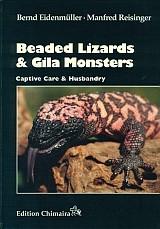

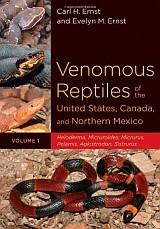

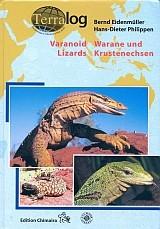

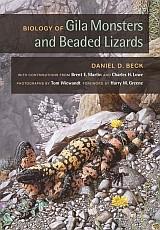

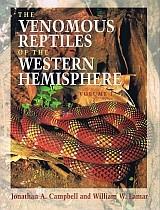

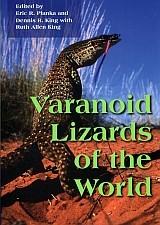

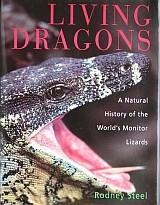

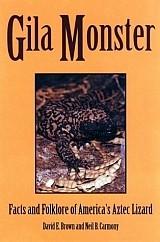



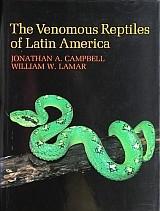

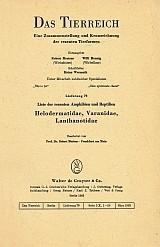

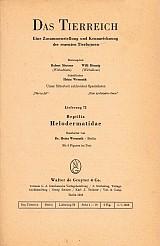

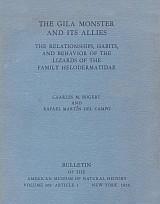











































































































































































|

